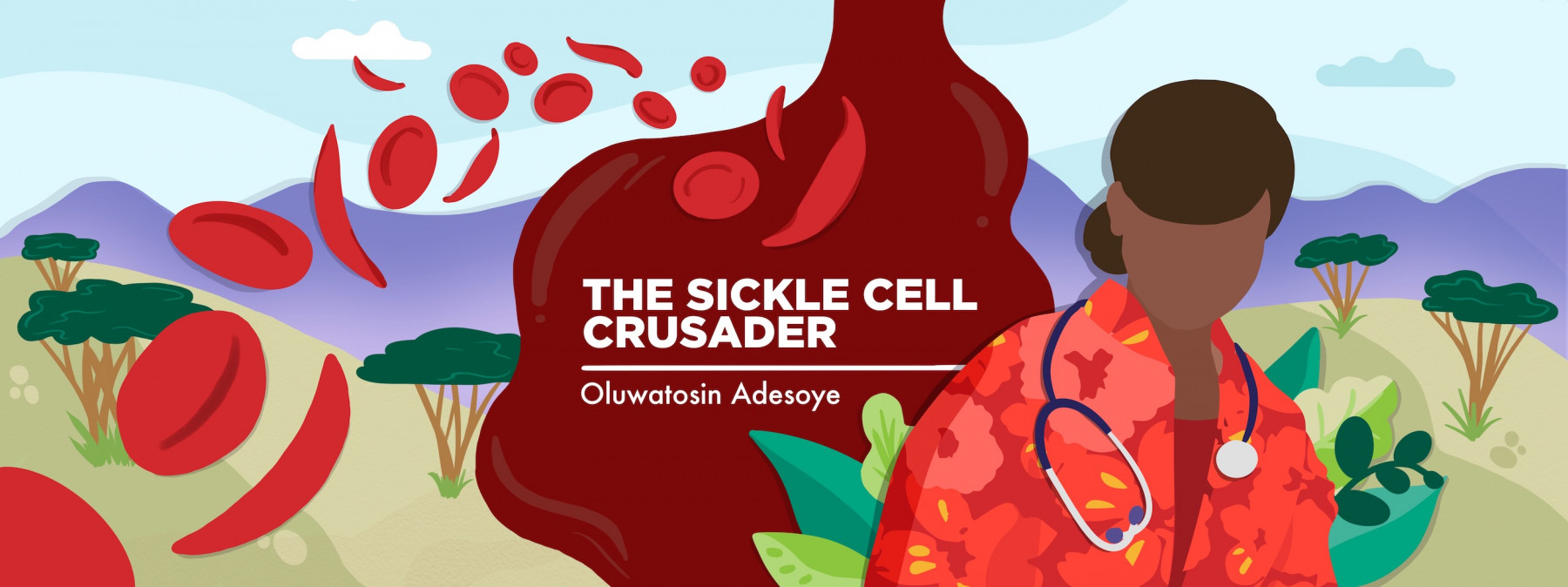Understanding the diverse nature of sickle cell pain crises
A patient and physician addresses common misconceptions about crises

The nature of sickle cell pain crises is often misunderstood due to inadequate knowledge and research. This limited understanding extends even to healthcare professionals.
It’s crucial to recognize that many common assumptions about crises — including their onset, duration, location, character, severity, and ending — are inaccurate. Drawing from my experience living with sickle cell disease for almost four decades as well as my medical knowledge as a physician, following are several key things everyone should understand about sickle cell pain crises.
A crisis occurs when sickled red blood cells clump together and block blood flow, causing tissues to become deprived of oxygen. The term “crisis” is often synonymous with pain, as that’s the most common symptom.
The onset of a crisis can be gradual or sudden. Some patients may experience warning signs, such as fatigue, body pain, and lip numbness, while others do not. Accusing patients of malingering because their crisis came on suddenly is unfair and hurtful.
I have experienced both gradual and sudden onsets in my life. For me, it depends on the trigger: Stress, for example, often results in a gradual onset, while cold weather and panic attacks can cause a sudden crisis. A slower onset may allow for preventive measures, such as resting when I feel fatigued or experience mild pain. But if I neglect rest, the crisis worsens.
It’s also important to note that the duration of a crisis can vary. I’ve had acute crises that lasted five minutes, as well as ones that persisted for hours, days, or weeks. There have even been times when I experienced pain almost every day for more than three months, which is known as chronic pain syndrome.
The location of my crises has evolved over time. As a child, they often occurred in my hands, legs, upper limbs, and abdomen, occasionally reaching my chest. However, the crises were no longer limited to specific areas as I grew older. I realized they could affect any part of my body, from my limbs to my back, head, neck, and even gluteal region. A sickle cell crisis can occur wherever blood flows, making any body part susceptible to pain.
The severity of a pain crisis can vary widely as well. And even if two crises share a classification like “severe,” the intensity levels can differ. Sometimes, when my pain is severe, it becomes challenging to rate it on a scale of 0 to 10, as my pain seems to surpass the scale, reaching extreme levels. My pain levels also play a role in how I respond to medication.
Sickle cell patients may experience different types of pain, ranging from sharp to dull, colicky to throbbing, and more. I vividly remember one severe crisis where the pain felt like a car was repeatedly driving over my bones.
Lastly, like the onset, a crisis can end suddenly or gradually. While gradual endings are more common for me, I’ve experienced both types. Unfortunately, there’s a misconception in healthcare that a patient must have been faking if their crisis ends abruptly. This assumption is incorrect and leads to stigma, discrimination, and inequality in care. It’s essential for providers to understand that how a sickle cell crisis ends doesn’t indicate authenticity of pain.
Everyone with sickle cell disease is affected differently by it. As patients, we must remember that our personal experience can’t offer a complete understanding of the disease and may not be representative of others’ experiences. It’s never appropriate to stigmatize or discriminate, and it’s essential to approach people with empathy and understanding.
Note: Sickle Cell Disease News is strictly a news and information website about the disease. It does not provide medical advice, diagnosis, or treatment. This content is not intended to be a substitute for professional medical advice, diagnosis, or treatment. Always seek the advice of your physician or other qualified health provider with any questions you may have regarding a medical condition. Never disregard professional medical advice or delay in seeking it because of something you have read on this website. The opinions expressed in this column are not those of Sickle Cell Disease News or its parent company, Bionews, and are intended to spark discussion about issues pertaining to sickle cell disease.








Ewube Gloria
Thank you for this article atleast i can show my friends how i feel when i have a crisis